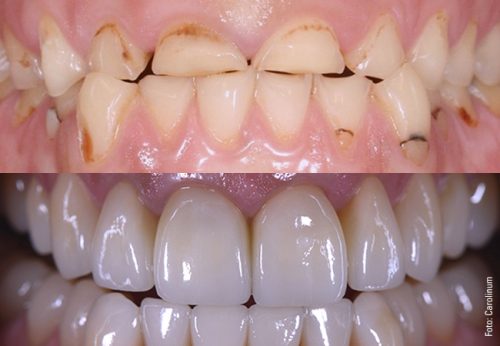Incidences of eating disorders such as bulimia and anorexia are becoming more common, especially among young people. In addition to the urgent need for medical and psychological therapy, the dental health of those afflicted also bears consideration. A new offer from Goethe University’s Center for Dentistry, Oral and Maxillofacial Medicine (Carolinum) offers advice, prevention and therapy.

Eating disorders such as anorexia and bulimia can lead to severe dental damage. The cause: due to frequent vomiting, the pH value in the oral cavity is acidic over a longer period of time and the teeth gradually lose their minerals. This can result in discoloration and indentations on the teeth, which can also become more sensitive. If the tooth structure is subject to frequent acid attacks, the shape of the tooth may change, potentially resulting in pain and tooth decay.
Early dental intervention can prevent damage to the tooth’s structure and treat existing erosions. To this end, Prof. Jan-Frederik Güth, Head of the Polyclinic for Dental Prosthetics, and Prof. Stefan Rüttermann, Head of the Polyclinic for Tooth Preservation, have set up an interdisciplinary consultation specialized in dental therapy for eating disorders. An early focus on the connection between eating disorders and dental health can help avoid extensive dental treatment at a later stage, and therefore save on high costs.
As part of the consultations, dentists Miriam Ruhstorfer and Charlène Bamberg offer patients two-phased advice. The initial focus is on diagnostics and prophylaxis, including an intraoral scan that enables a three-dimensional analysis. Also part of this stage is oral hygiene training aimed at optimizing the cleaning of the teeth. Offering additional protection to the teeth while simultaneously also strengthening them is fluoride, administered with the help of custom-made transparent splints. The second stage encompasses the treatment of existing damage to the tooth structure and, if necessary, to the jaw joints, as well as dental check-ups for the early detection of new damage.







